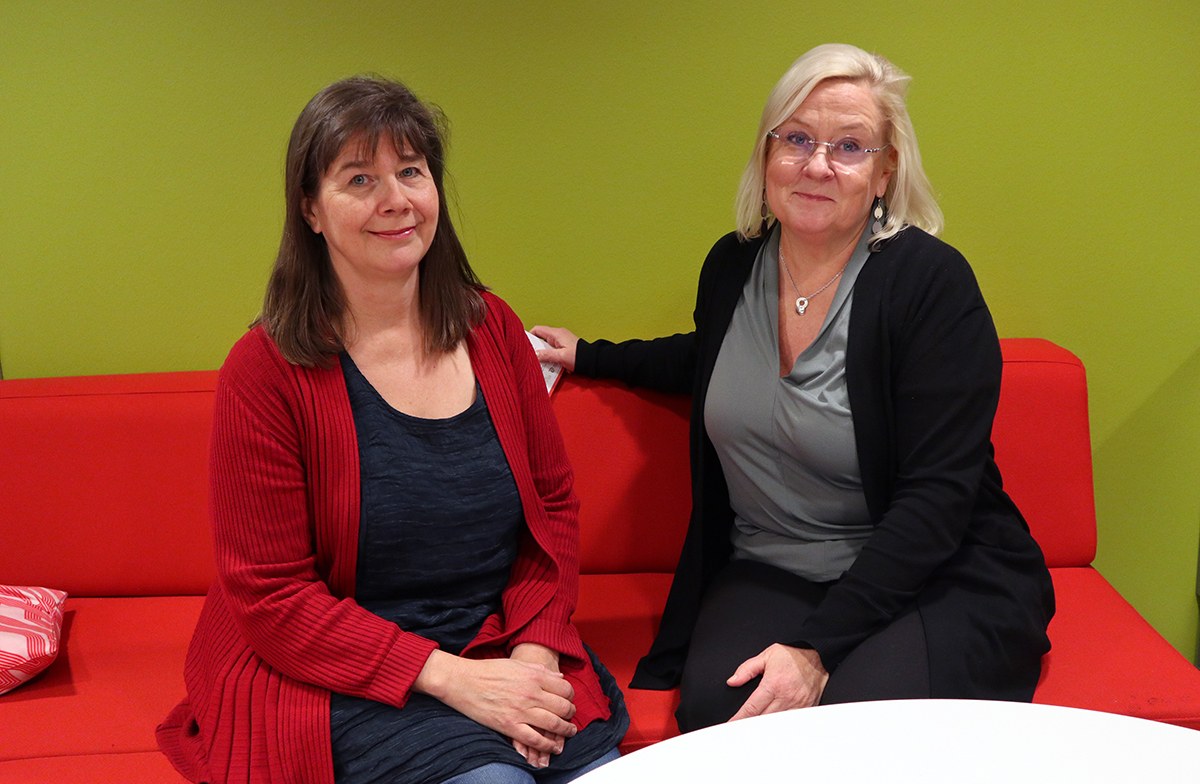What are micro-credentials and open digital badges?

In Europe and all around the world, smaller education and learning entities are being developed alongside diploma trainings. Open digital badges and micro-credentials are strongly linked to the anticipation of knowledge needs. Both are just becoming established, but they are smart and fast ways to acquire, demonstrate, identify, and flexibly recognise knowledge.
EduSTA project combines micro-credential thinking with micro-degrees
Principal Lecturers Hanna Teräs and Sanna Ruhalahti have been promoting these knowledge accumulators for a long time. Both are involved in the Academy for Sustainable Future Educators (EduSTA) project coordinated by their home institution Tampere University of Applied Sciences (TAMK). The project promotes pedagogical sustainability skills of professional teachers. The EduSTA project will create a digital open badge constellation to strengthen teachers’ sustainability skills.
“Accumulated competence can be demonstrated flexibly by small sets of competences, which may consist of accomplished open digital badges. These smaller studies and skills allocated using open digital badges are scalable and respond to the skills gaps”, says project manager, and TAMK’s Lecturer Eveliina Asikainen.

According to Asikainen, the digital open badges serve well teachers that are already skilled in environmental and sustainability education. Their expertise is often accumulated through small courses and hands-on work. By performing digital open badges, they can make their competences visible.
Micro-credentials reduce knowledge gaps
Micro-credentials are not degrees but smaller entities complementing them. They are smaller than modules of continuing education. With micro-credentials employees can quickly upgrade their skills.
“They are targeted knowledge and skills that serve as a precise means to fulfill knowledge gaps and needs”, says Hanna Teräs.
She describes micro-credentials as lego blocks from which one can build a suitable combination for a specific need. They are well suited to companies with a trained workforce, but in which a change in the operating environment indicates that there’s a lack of a piece of competences.
“One of the key target groups are employees who want to update their expertise in a particular area. Businesses can pick up what they need from the options on offer. Degree training for this type of need is too heavy pathway, killing a fly with a cannon”, Teräs says.
She stresses that micro-credentials do not lack a quality. Their competence objectives and criteria are clearly defined. The topic of micro-credentials is still new and unestablished, but the subject is widely featured in the EU, the Finish Ministry of Education and Culture, and strategies of higher education institutions.
Digital open badges can be used to flexibly demonstrate developing competences
Digital open badge is a digital tool to recognize and acknowledge knowledge accumulated in a wide range of situations. Flexible development of competence and demonstration is in its’ core.
Sanna Ruhalahti has been involved in developing digital open badges for 10 years. She is an avid advocate for the matter. The use of digital open badges has expanded in Finland, for example Valmet has widely adopted them in the whole company.
“What matters is the competence, not where it is acquired. The competence may already exist or it can be acquired by completing digital open badges in studies or even in hobbies.”
According to Ruhalahti, some of the badges recognize presence, or belonging to some community or taking care of certain work duties. Some are digital course performance marks. Some of them identify and recognize competences, and only in these cases we can talk about the digital open badges.

With digital open badge families you can build different types of competences
Digital open badge constellations combine many areas of expertise, each of them is accompanied by smaller micro-badges. “The most motivating ones are the ones you can do in small pieces”, Ruhalahti says.
Open Badges is a technical standard developed back in 2012. Forty-three million open badges have already been issued. In Finland, the Open Badge Factory is used as a management system, where all open badges are created, and applications are evaluated.
The digital open badge must depict how the person has demonstrated his/her competences. The badge is an electronic certificate linked to a graphic image. It tells you what it is about and who has granted the badge. The date of acknowledgement, competence objectives, evaluation criteria, demonstration of competence and required evidence can be found in the digital open badge metadata.
Digital Open Badge Passport is an important addition to one’s portfolio
Digital open badges are distributed in the Open Badge Passport, which can be linked, distributed, and built to support one’s portfolio. Digital open badges are always tied to an email address. Some of them are fixed term. Badges allow ways of knowledge visualization, digital documentation, sharing, identification and recognition.
The terminology is not fully established and there are no national standards yet. According to Ruhalahti, the digital open badge-driven learning model is an important addition to degree and continuing education.
“The use of digital open badges is based on research. We can guide, identify, and acknowledge competence in a motivating way regardless of time and place. We need more information about digital open badges so that we can make them more widely available and re-think how to utilise them as micro-credentials.
To learn more about the EduSTA please visit project website.
More information of digital open badges is availabe at Tampere Universities’ Community’s Teaching and Learning Centre website.
Additional information:
Sanna Ruhalahti
Principal Lecturer
Pedagogic Innovations and Culture
Tampere University of Applied Sciences
sanna.ruhalahti [at] tuni.fi (sanna[dot]ruhalahti[at]tuni[dot]fi), +358 50 3437 654
Hanna Teräs
Principal Lecturer
Pedagogic Innovations and Culture
Tampere University of Applied Sciences
hanna.teras [at] tuni.fi (hanna[dot]teras[at]tuni[dot]fi), +358 40 6469 842
Text and photos: Hanna Ylli





